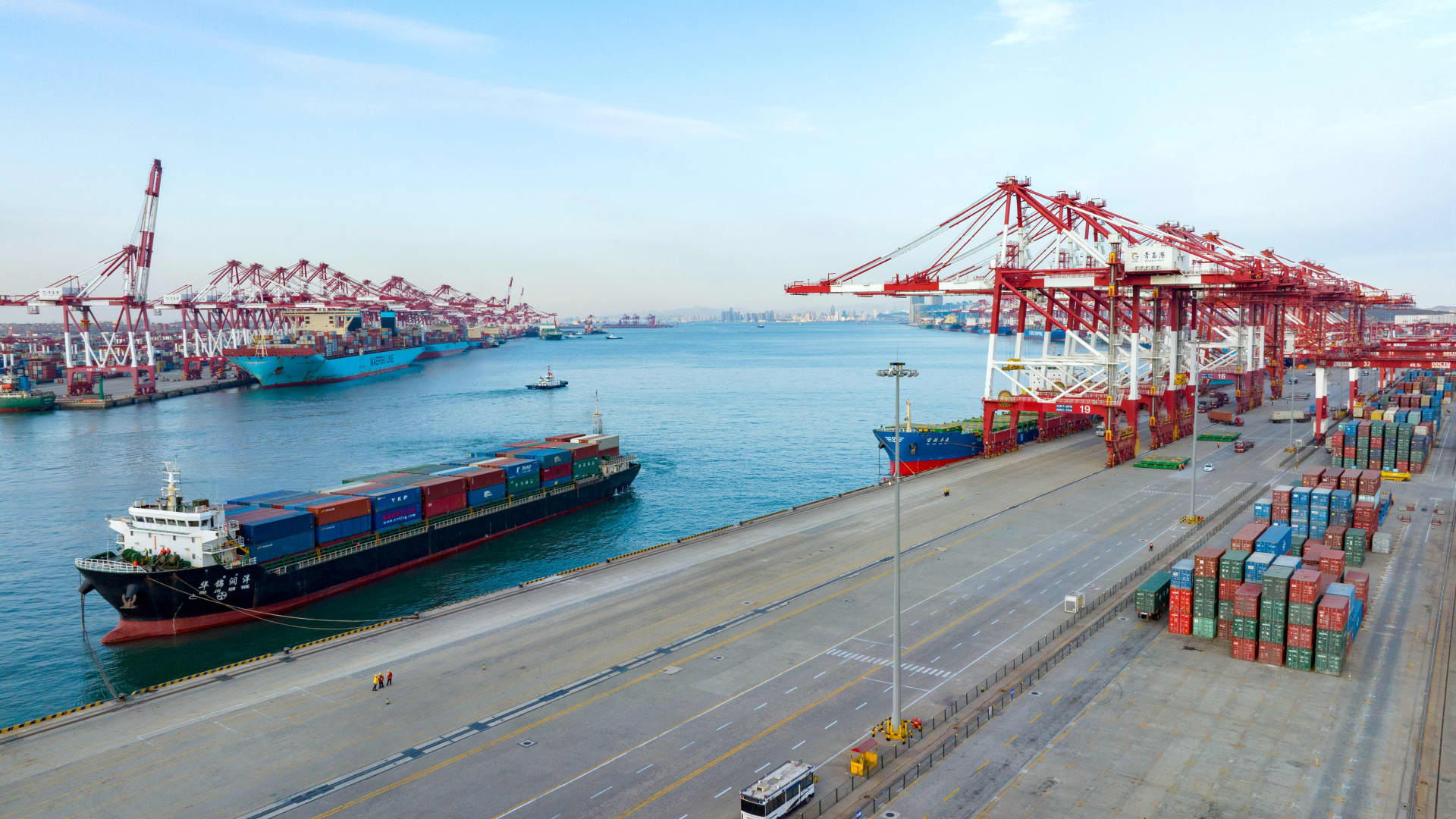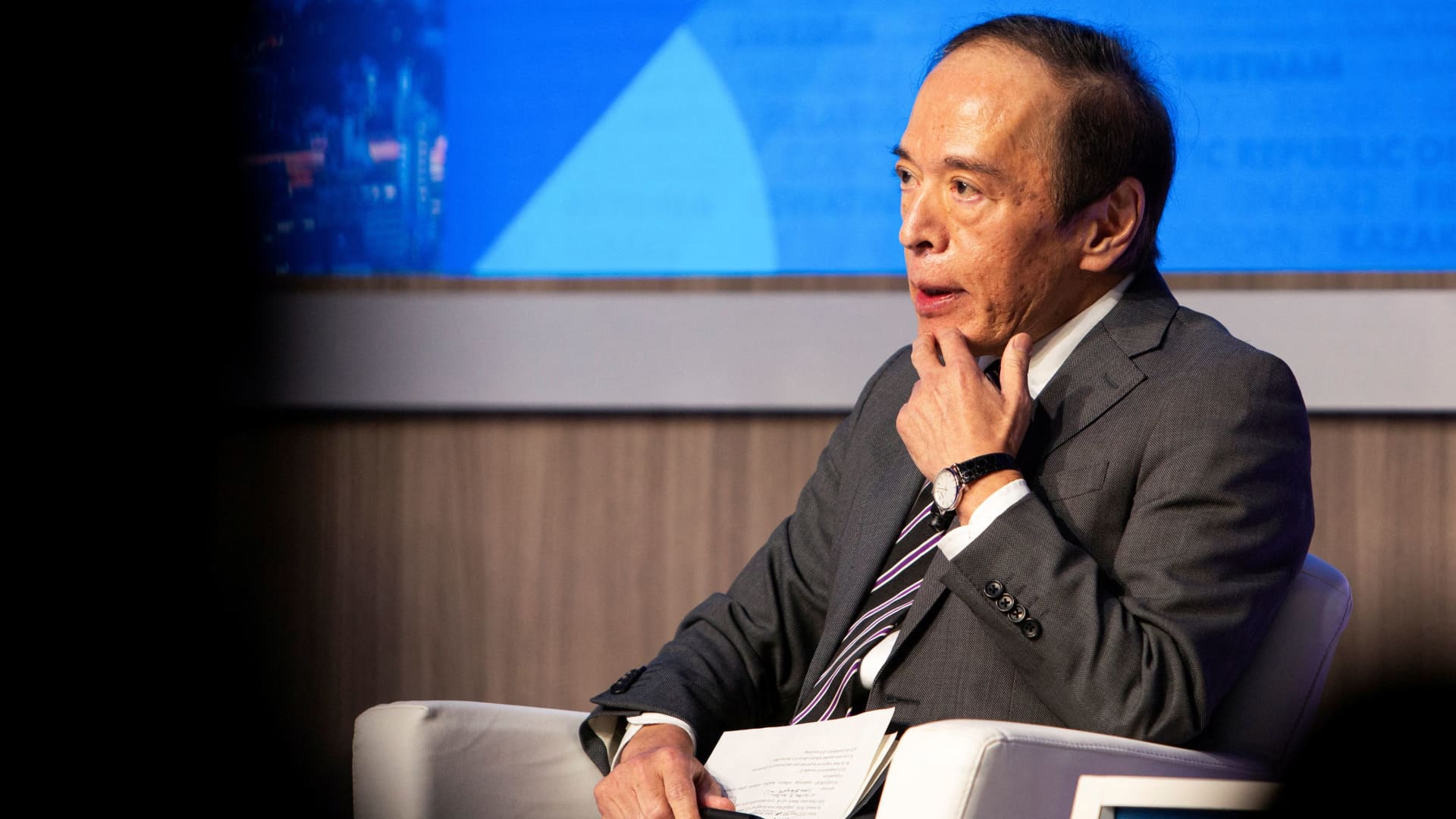A general view of the container terminal in Qianwan of Qingdao Port, a port in Shandong Province, China, March 17, 2023.
CFOTO | Future Publishing | Getty Images
China’s exports jumped more than expected in March as businesses frontloaded outbound shipments to avoid prohibitive U.S. tariffs, while imports extended declines as sluggish domestic demand persisted.
Exports jumped 12.4% last month in U.S. dollar terms from a year earlier, according to data released by customs authority on Monday, significantly outpacing Reuters’ poll estimates of a 4.4% growth and marking the biggest jump since October last year.
Imports fell 4.3% in March from a year earlier, compared with economists’ expectations of a 2% decline, though recovering from a sharp 8.4% plunge in February.
In the first two months of the year, China’s exports had slowed more than expected, growing just 2.3% year on year, marking the slowest rise since April 2024. Imports clocked a steeper-than-expected decline of 8.4% from a year ago, their sharpest fall since mid-2023.
The Chinese leadership has set an ambitious annual growth target of “around 5%” this year, a goal seen harder to achieve given the prospects of an escalating trade war and persistently lackluster domestic consumption.
Since U.S. President Donald Trump’s inauguration in January, he has imposed a cumulative 145% tariffs on all imports from China, including a 20% duty allegedly related to Beijing’s role in fentanyl trade.
China has struck back with tit-for-tat tariff increases, including levies of up to 15% targeting select American goods and across-the-board tariffs of 125% in the latest retaliation last Friday.
Lingjun Wang, the vice head of customs administration, said at a press conference Monday that the U.S. government’s “abusive use of tariffs” has created headwinds for global trades, according to a CNBC translation, while repeating Beijing’s call for a negotiation with Washington.
China will “implement all countermeasures announced against the U.S. strictly in accordance with the law,” while continuing to open up its economy for mutually-beneficial trade and investment cooperation with countries around the world, Wang said.

In a relief for many, last Friday the Trump administration granted reprieves for reciprocal tariffs on a slew of electronics products, including smartphones, computers, semiconductors, solar cells and flash drives, according to a notice from the U.S. Customs and Border Protection. The prior 20% fentanyl-related tariff remain in place.
China’s ministry of commerce called the exemptions a “small step by U.S. to correct its wrong practice of unilateral reciprocal tariffs” and urged Washington to cancel the steep tariffs completely.
Pressure has been building on Chinese officials to release more forceful stimulus measures to prop up domestic consumption and the housing market, while reducing the economy’s reliance on exports and investment.
Data released last week showed Chinese consumers have remained reluctant to spend, with consumer prices contracting for a second straight month while producer prices falling for the 29th straight month.
Several investment banks have moved to slash China’s growth forecasts this year citing impacts from the substantial rise in U.S. tariffs on Chinese goods.
Goldman Sachs, the latest to join the ranks last week, expects the world’s second-largest economy to grow just 4.0% this year, down by 0.5 percentage point from its prior forecast. While it anticipates Beijing to further intensify policy easing to counter the tariff disruption, the Wall Street bank believes the measures may not be able to “fully offset the negative effect of the tariffs.”




